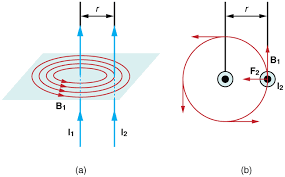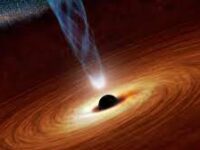Physics — from the Latin physica (“natural philosophy”), itself from the Greek φύσις (“nature”) — is the study of matter, energy, and the interactions between them. All such interactions fall into one of four categories, known as the four fundamental forces of physics, the combinations of which explain with great accuracy the majority of known phenomena.
The first fundamental force, gravity, is perhaps the most obvious as it pertains to our lives. The study of gravity began with the first formal descriptions of matter in the fifth century BCE by Democritus of Abdera, who founded the Atomistic School in Philosophy. It is from this school that the term atom, from the Greek ἄτομος (“indivisible”), originated.
Atomists conceptualized all matter as comprising microscopic, indivisible portions. From this original description of matter came Archemedes’ theories on mass in the third century BCE, John Philoponus’ theory of impetus — a precursor to momentum — in the sixth century CE, and Johannes Kepler’s three laws of planetary motion in the early 17th century.
These two millennia of progress culminated in Isaac Newton’s Philosophiæ Naturalis Principia Mathematica (“The Mathematical Principles of Natural Philosophy”) in 1687, which laid out his three laws of motion as well as his law of universal gravitation, the latter of which being among the first quantitative descriptions of gravity.
The second fundamental force, the electromagnetic force, was originally described as two separate forces, electricity and magnetism. Both have been observed since antiquity, with philosopher Thales of Miletus attributing the static charge of rubbed amber (from whose Greek name, ἤλεκτρον, we get the word “electricity”) and the invisible pull of lodestones (from whose source, Μαγνησία, we get the term “magnet”) to deific action, though the two phenomena were pursued separately.
Magnets found utility early on in navigational instruments, with manufacturing methods being discovered as early as 1064 by Chinese scholar Zheng Gongliang. The first rigorous experiments on magnets would not be done until 1600 by English physician William Gilbert in his treatise De Magnete (“On the Magnet”), where he also discussed electricity, though again as a separate phenomenon.
By contrast, prior to Gilbert, electricity went almost completely unobserved beyond lightning and triboelectricity, due in large part to the difficulty of studying it. Arbitrary stable current sources were virtually impossible to create until 1800, when Italian physicist Alessandro Volta invented the first battery using electrochemical cells.
The two fields were finally combined in 1820 by Danish scientist Hans Christian Oersted who, during experiments with voltaic cells and coiled wires, noticed that the current produced by the battery deflected the point of a compass. His observation established the phenomena as two manifestations of a single electromagnetic field. The Scottish experimentalist James Clerk Maxwell then aggregated and quantitatively described the body of research between 1861 and 1862.
The last two forces — the strong nuclear force and the weak nuclear force — were discovered much later than the first two, due in large part to the scale of their interactions. While gravity and the electromagnetic force are capable of interacting at a seemingly infinite distance, the strong and weak nuclear forces extend only about as far as the diameter of a single proton.
In 1896, French physicist Henri Becquerel accidentally discovered radioactivity, and what would later become known as beta decay, when working with samples of uranium salts. However, no known theory at the time could account for the spontaneity of radiation, nor for its relatively high energy. Italian physicist Enrico Fermi later theorized a mechanism for beta decay in 1933, a first attempt at describing the weak nuclear force.
Following New Zealand physicist Ernest Rutherford’s discoveries of the atomic nucleus and proton in 1911 and 1917, questions arose as to how nuclei could remain stable given that, under electromagnetic theory, their protons should repel each other, tearing the nuclei apart. With the eventual discovery of the neutron, German physicist Werner Heisenberg put forth the so-called neutron-proton model of nuclear interaction in 1932 to explain nuclear stability, a first attempt at describing the strong nuclear force.
“That is, even two millennia following the first formal inquiry into φύσις, we are developing more accurate descriptions of the universe.”
The first formal description of a unified nuclear field model came from Japanese physicist Hideki Yukawa shortly thereafter, laying the groundwork for what would eventually become the Standard Model of Particle Physics. That is, even two millennia following the first formal inquiry into φύσις, we are developing more accurate descriptions of the universe. Still, despite the complexity of our chaotic world, we have distilled physics into four fundamental components, and may yet simplify it still.
- American Journal of Space Science (2013). DOI: 10.3844/ajssp.2013.33.45
- Encyclopedia of Condensed Matter Physics (2024). DOI: 10.1016/B978-0-323-90800-9.00155-4
- Journal of Chemical Education (1929). DOI: 10.1021/ed006p1726
- The Origin of the Concept of Nuclear Forces (1996). ISBN: 0-7503-0373-5


